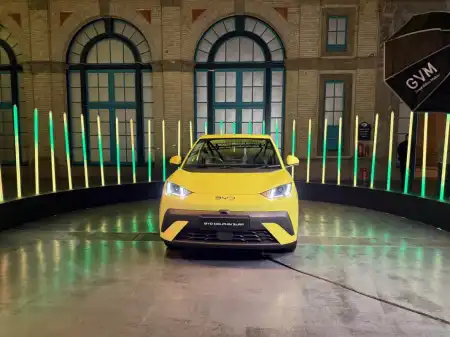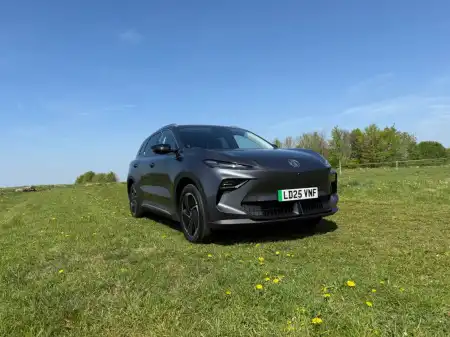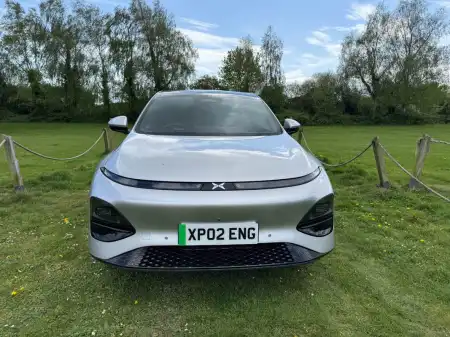- Improved interior materials
- Switches between electric & hybrid mode seamlessly
- Manages its weight well and is quick-ish off the mark
- Rear motor eats some boot space
- High centre of gravity is felt in the corners
- Electric tailgate is frustrating when it’s raining.
Introduction
‘Plug-In Hybrid Electric Vehicle’ - in case you were wondering what it stood for. Realistically, the most accessible step towards going full-electric is a Plug-In Hybrid. You don’t have to be strict with charging, as the car can run by itself on petrol, but you get to have a taste of what full-electric (or at least electric-assisted) driving is like. The PHEV positions itself in the most blossoming sector of the UK automotive industry as a mid-to-large sized 5 seater SUV.
On The Road
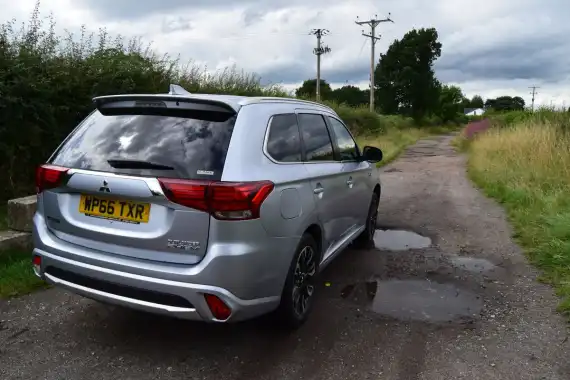
Performance
The first thing you’ll notice is that the car isn’t on, but it is, you just don’t notice. It’s a strange sensation to enter a car, press the ‘start’ button and has nothing happen. No ticking over, no engine noise, no vibration from the bonnet, nothing. Stick the ‘lever’ (it’s more of a joystick) into Drive and silently you’ll be whisked off the line.
The Outlander PHEV is surprisingly quick off the line thanks to the immediate response of the electric motor which helps get the wheels turning at a slower speed before the petrol engine seamlessly kicks in, to provide the guts to take it up and above 30mph. Then the petrol motor takes over and provides a progressive amount of power, enough to get comfortably to 80 mph and sit there, but not enough to go on much further, which is absolutely fine.
One thing worth noting about the Outlander is that it charges itself through regenerative braking, but that’s not just when you hit the brakes, it adds resistance to the rolling force of the wheels whenever your foot isn’t on the accelerator. It’s difficult to explain, but basically, if you accelerate and take your foot off the pedals, the car will gradually brake itself to generate energy for the battery. It works by itself and requires no effort from the driver, but it takes a bit of getting used to.
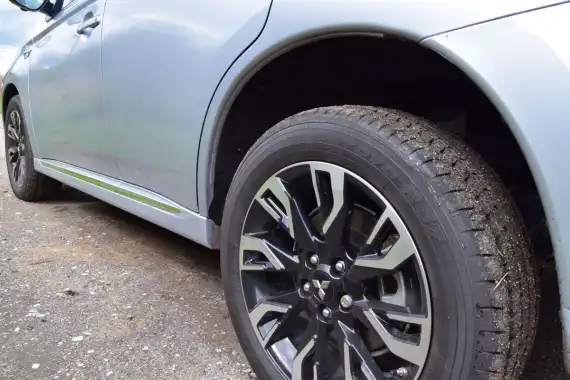
Ride Handling
The Outlander PHEV isn’t a car to be driven too aggressively, which would completely undermine the point of buying a plug in hybrid, so Mitsubishi were able to focus their efforts on ensuring the characteristics are comfortable and serene under real-world circumstances. The PHEV will iron out even the most excessive speed bumps so effectively that you needn’t slow down for them if you aren’t speeding.
In the bends, the PHEV does let itself down a little bit because the body roll is quite violent. The car leans slowly as you take open bends at pace, but then the car suddenly snaps back to centre when the road straightens out. A tangible reminder that, firstly, you aren’t going to be setting any lap records in this car and, secondly, you’re ruining your MPG - calm down.
The steering is direct and precise, thankfully, it is the polar opposite of the steering in the Outlander’s rogue sibling, the Shogun.
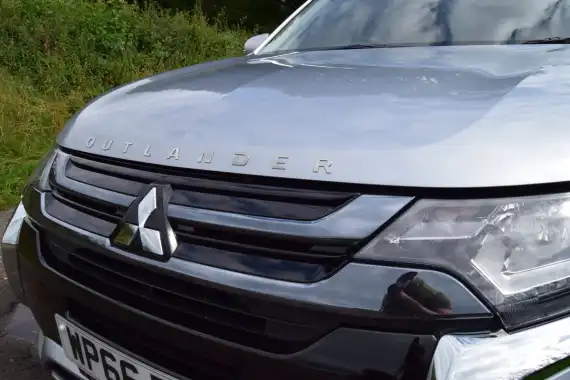
Styling
As mentioned, you’ll be suitably confused by the silence of turning on the ignition in the Outlander PHEV. It’s quite blissful, actually. Then, off you roll, still in silence but for a futuristic and satisfying ‘whirr’ coming from the electric motor, much like something from a sci-fi movie, and this is where electric cars are usually exposed. Any squeaks or rattles become more pronounced when there are no combustion engine noises to drown them out. It seems that the fit and finish of the Outlander is quite impressive, then, because there were no irritating interior rattles whatsoever. As you pick up pace the petrol motor kicks with a gradual effect, so gradual it’s difficult to tell if it has definitely turned on. The power delivery is progressive and uninterrupted, which really helps position this car as a solid choice for buyers who want to make their first step toward electric vehicle ownership but are a bit apprehensive of it all. The beauty of the PHEV is that you’ll make half the leap to full electric without having to change an awful lot about how you drive, and thanks to the regenerative braking power, you don’t necessarily even need to charge it up at night, although it would help.
In The Car
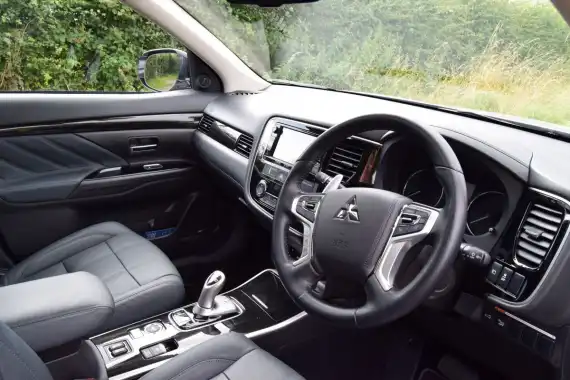
Behind the Wheel
We tested the H5 model, which positions itself right at the top of the trim levels, giving us the best taste of what Mitsubishi can do. I was pleasantly surprised overall. There is now upgraded leather throughout the cabin which is squishier and comfier than before, and perfect for messy children. The leather steering wheel is now thicker than in the previous models and can be heated on the top models. There’s a new glossed-over oak effect on the dashboard and on the centre console which is absolutely lovely. It’s an effect which wouldn’t look out of place in the premium Volvo range.
The media and infotainment system is a little bit basic and the touch screen isn’t quite as responsive as I’d like, but I am quite picky with touch screens. My main gripe is that the head unit looks like it’s an aftermarket block from Halfords.

Space & Practicality
The tall roofline means headroom is in abundance in the front and back, but the extra height is most needed in the boot. A second electric motor is located between the two rear wheels, and on top of this (underneath the boot floor) is where the charging cables are stored, this all eats into loading capacity. Luckily that lofty ceiling helps give back some of the space, leaving 463litres of room, which is plenty. This extends to 1,480 litres with the rear seats folded down. Legroom is plentiful too, even my 6”7 cousin had no complaints in the back and there is only a very small central ‘hump’ so the middle passenger has room for their feet too, which is ideal.
The electric tailgate helps on the practicality front, although it’s pretty slow to operate and after about 15 minutes of trying, I couldn’t get it to work from the remote key. Despite there being an engraved image on the key that looks just like back of the Outlander, with an arrow indicating the swinging movement of the boot lid. Maybe I was doing something wrong, but if that’s the case then the function is not as simple as it needs to be. Either way, I couldn’t get it to work.
Ownership
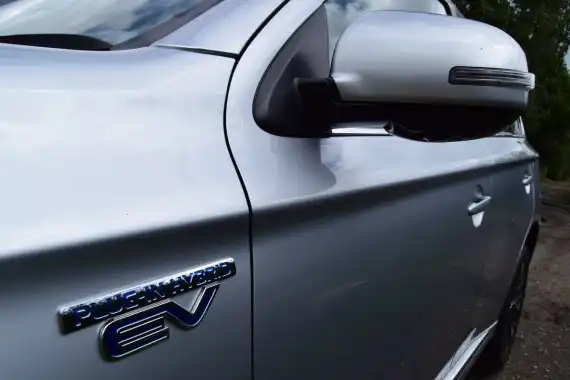
Running Costs
The two headline figures are 42g/km of CO2 and 156mpg. The first figure will please company car drivers immensely, the second figure is a bit of a joke, to be honest. You’ll have to be doing a very specific journey length under very strict driving circumstances to achieve near that figure, but that doesn’t mean it’s impossible, it’s just very difficult. With a mix of inner city driving and some enthusiastic outer-city driving I managed 86mpg, which is still extremely good for a car of this size.
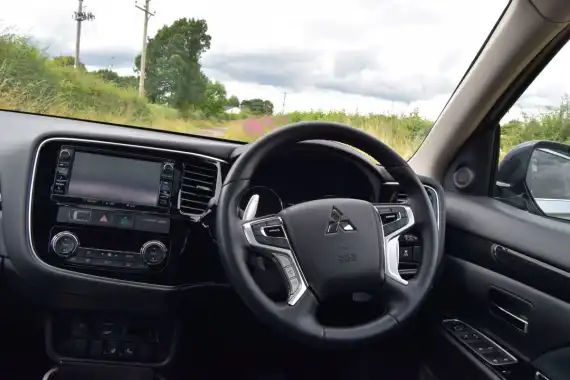
Quality & Reliability
The new front-end looks more in line with modern design compared to the old model, which is a good thing. One friend of mine, admittedly not the most car-savvy in the world, noted that it looked almost like a Land Rover from the front, which can only be considered a compliment. The material quality is now above and beyond what you would expect from Mitsubishi and while there are a few things to nitpick (like the heated seats being operated via the same plastic buttons used in about 30 other cars on the market at the moment) it’s all a bit too particular. Your average buyer will be really pleased with the quality of the Outlander PHEV.
Reliability wise, the old PHEV didn’t have too many common or recurring problems to note. In fact, considering this is all new technology, the PHEV seems to be going down a storm. This goes some way toward explaining why it is the best-selling plug-in hybrid in the UK at this moment, and it will continue to be for a while with this latest model.
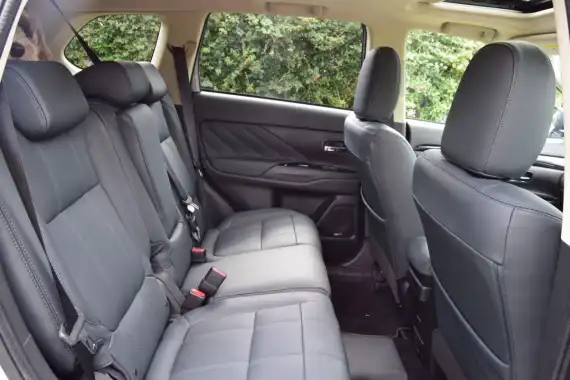
Safety & Security
The Outlander received a full 5 stars on the NCAP safety rating, which has quickly become the industry standard. The PHEV comes with 4 wheel drive to offer the most balanced and assured performance across all weather conditions, as well as Emergency Stop Signal System which works to prevent or reduce the impact of imminent collisions.

